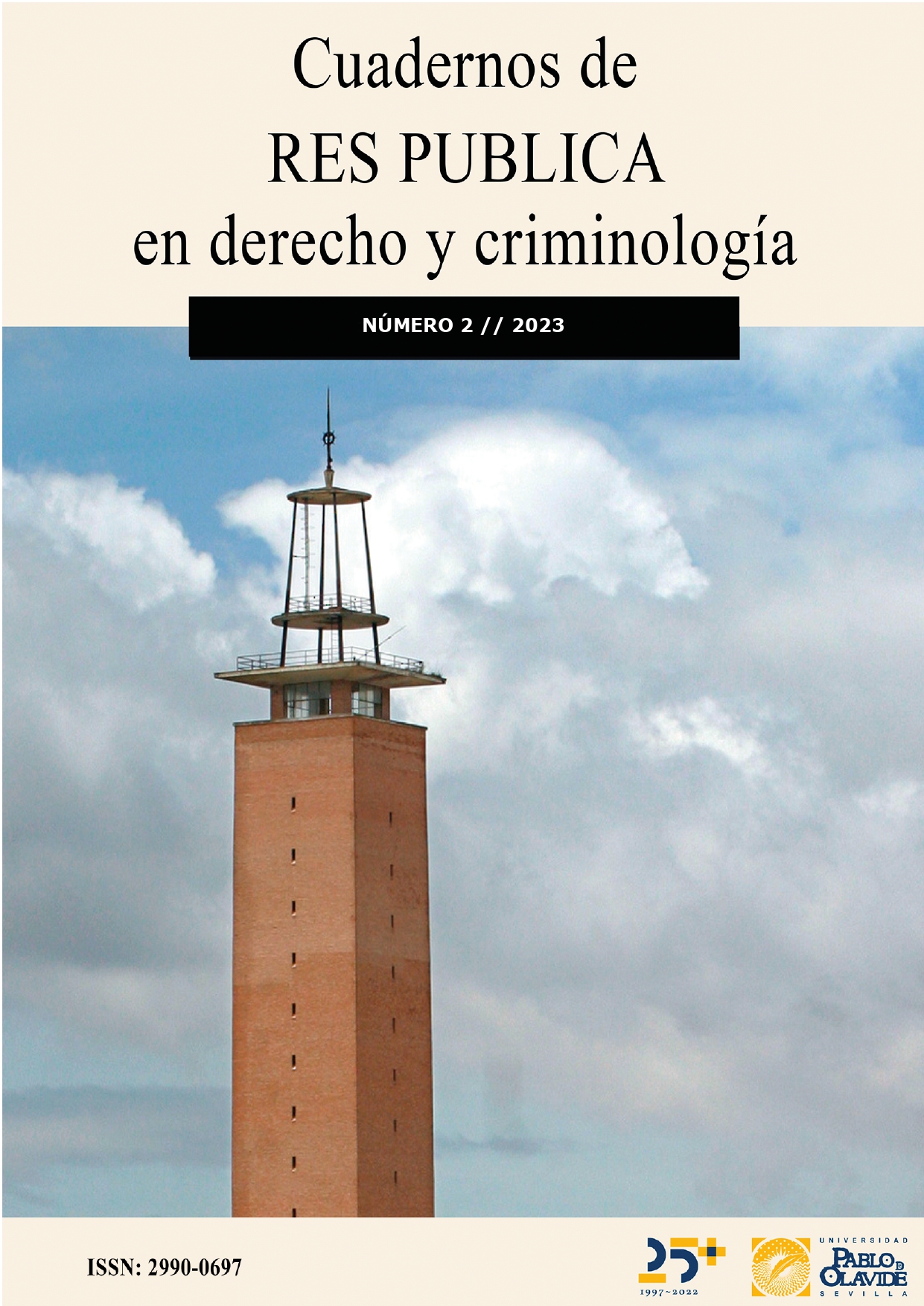La violencia y la sexualidad
Aproximación a un fenómeno histórico
DOI:
https://doi.org/10.46661/respublica.8049Palabras clave:
sexualidad, violencia, autoritarismo, moralidadResumen
El presente estudio se propone examinar cómo fenómenos distintos se interrelacionan: la violencia y la sexualidad. Para su realización se hace necesario acercarse a los conceptos y sus implicaciones en la existencia individual y social de la humanidad; para viabilizar el estudio se enfoca en el período central del siglo XX, examinando las idiosincrasias en España y Brasil, porque ambos territorios tenían aspectos que nos parecen comparables, como el hecho de haber vivir bajo regímenes políticos autoritarios, con intensa influencia moral cristiana. Las herramientas utilizadas han sido el Análisis del Discurso, en su vertiente francesa, que considera la lengua como una construcción social orgánica y el método deductivo, por ofrecer la posibilidad de apropiación de datos amplios y generales para acercarnos a los casos y lugares específicos. La hipótesis es una marcada naturalización de la violencia sexual en el referido espacio tiempo, derivadas de las limitaciones políticas y culturales (religiosas).
Descargas
Citas
ARENDT, HANNAH. (2006). Sobre la violencia. Alianza editorial
ARENDT, HANNAH. (2013). Eichmann en Jerusalén. Lumen.
BERGER, PETER. (1971). El dosel sagrado. Amorrortu.
BERNAL CRESPO, JULIA SANDRA, OROZCO ARCIERI, CARLOS ANDRÉS, & MOLINARES HASSAN, VIRIDIANA. (2016). Foucault and Homosexuality: From Power Relation to Practice of Freedom. Revista de Derecho, (46), 111-130. https://doi.org/10.14482/dere.46.8813
BOURDIEU, PIER. (1996) Razões práticas: sobre a teoria da ação. Campinas: Papirus Editora.
BUTLER, JUDITH. (2007). El género en disputa: el feminismo y la subversión de la identidad. Paidós.
CONTRERAS, FRANCISCO JOSÉ. (2021). Biden y la diversocracia. Razón española, ISSN 0212-5978, Nº. 224, págs. 81-85
EGIDO LEÓN, ÁNGELES. (2011). Mujeres y rojas: la condición femenina como fundamento del sistema represor. Studia Histórica. Historia Contemporánea, 29, 19-34.
FOUCAULT, MICHEL. (2006). Seguridad, territorio, población. Fondo de cultura económica.
FOUCAULT, MICHEL. (1982). The subject and power. Critical inquiry, 8(4), 777-795. https://doi.org/10.1086/448181
FREEDMAN,LAWRENCE.(2016). Estrategia: una historia. La esfera de los libros.
GEBARA, IVONE. (2005). As aguas de meu poço. São Paulo: Brasiliense.
GIRARD, RENÉ (1995). La violencia y lo sagrado. Barcelona: Anagrama.
GROSSI, MIRIAM PILLAR. (1993). De Angela Diniz a Daniela Perez: a trajetória da impunidade. Revista Estudos Feministas, 1(1), 166.
KUBY, GABRIELE (2015). The global sexual revolution : destruction of freedom in the name of freedom. Angelico press.
MESQUITA SAMARRA, ENI DE. (1993). A mulher e a família na historiografia latino-americana recente. Anos 90, 1(1), 23-47. https://doi.org/10.22456/1983-201X.6116
MORAGA GARCÍA, MARÍA ÁNGELES (2008). Notas sobre la situación jurídica de la mujer en el franquismo. https://doi.org/10.14198/fem.2008.12.09
MOSCOVICI, SERGE. (1985) Psicología social, I: influencia y cambio de actitudes, individuos y grupos. Barcelona: Paidós Ibérica, .
OLIVEIRA, PLINIO. CORREA. (1969). Família. Folha de São Paulo. São Paulo. 24 de abril de 1969 [En linea]. Disponible en: < https://www.pliniocorreadeoliveira.info/FSP%2069-04-24%20Familia.htm> . Consulta en: 14 feb. 2023.
PINSKY, CARLA BASSANEZI. (2014). Mulheres dos anos dourados. Editora Contexto.
RAGO, MARGARETH. (2000).Trabalho femenino e sexualidade. En: PRIORE Mary del (Org). História das mulheres no Brasil. São Paulo: Contexto.
Descargas
Publicado
Cómo citar
Número
Sección
Licencia

Esta obra está bajo una licencia internacional Creative Commons Atribución-NoComercial-CompartirIgual 4.0.




